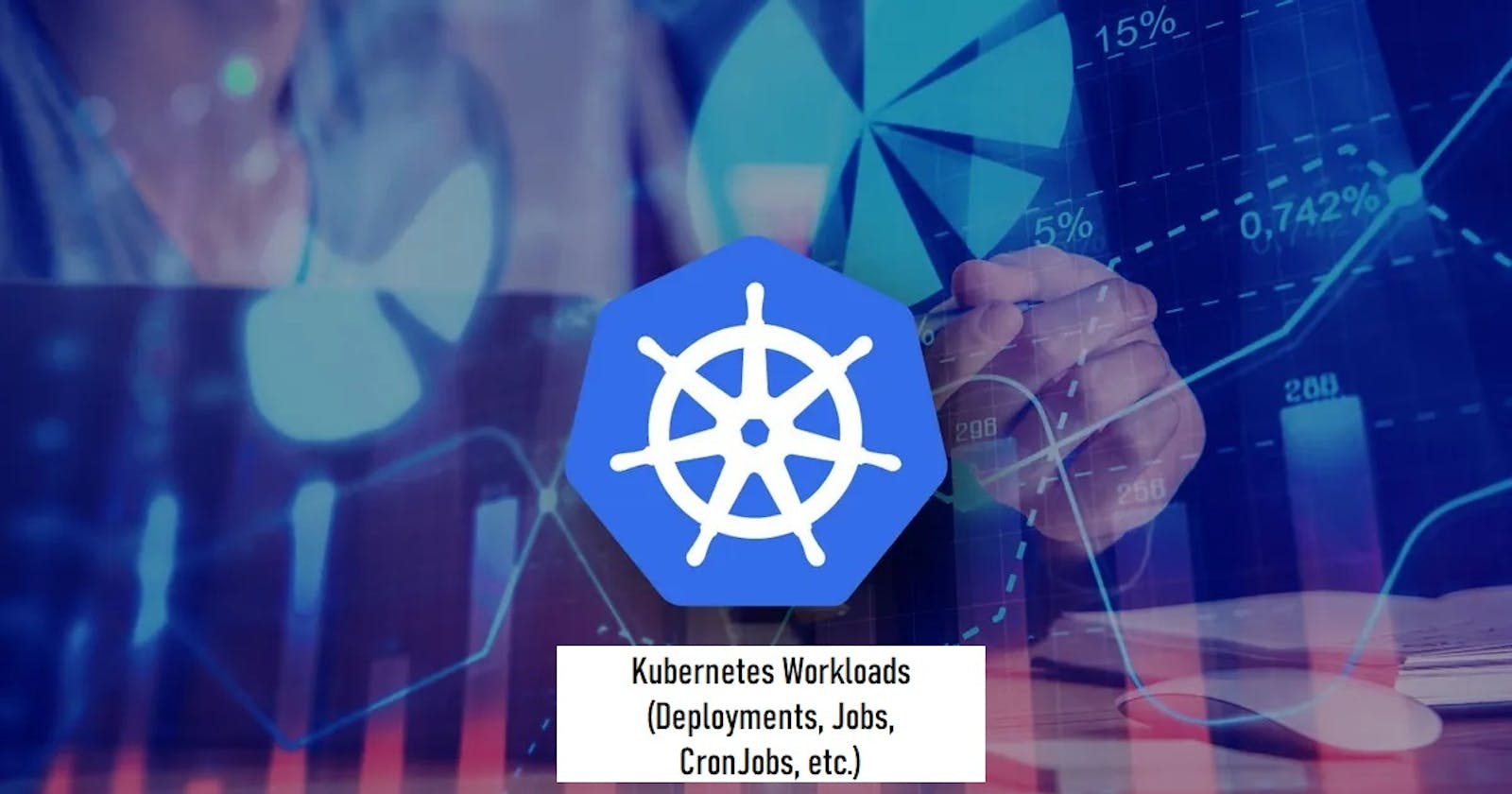Permalink❇️Kubernetes Workload
In Kubernetes, a workload refers to an application that runs within a set of pods. Pods are used to represent a group of running containers on the cluster and have a defined lifecycle. If a pod fails on a node due to a critical fault, all other pods on that node will also fail, requiring the creation of a new pod to recover.
To simplify workload management, Kubernetes offers built-in resources that allow for the management of sets of pods through configurable controllers. These controllers ensure that the correct number of desired pods is running, based on the state specified.
Kubernetes provides several built-in workload resources:
Deployment and ReplicaSet are suitable for managing stateless application workloads where any pod can be replaced if needed.
StatefulSet allows for related pods that track state to be run, such as workloads that record data persistently with each pod matched to a PersistentVolume.
DaemonSet defines pods that provide node-local functions that may be fundamental to cluster operation or part of an add-on.
Job and CronJob define tasks that run to completion and then cease. Jobs represent one-time tasks while CronJobs run on a schedule.
Using these workload resources eliminates the need to manage individual pods directly, simplifying workload management on Kubernetes clusters.
Kubernetes is a popular container orchestration platform that provides numerous resources to deploy and manage containerized workloads in a scalable and efficient manner. In this article, we will discuss the various types of workloads that can be deployed in a Kubernetes cluster, including Deployments, StatefulSets, DaemonSets, Jobs, and CronJobs.
Permalink💠Deployments
Deployments are used to manage the deployment of applications inside a Kubernetes cluster. They provide an easy way to perform rolling upgrades and rollbacks of applications by managing multiple replicas of a Pod template. The replicas are created on different nodes within the cluster to ensure high availability and failover capabilities.
To deploy an application using a Deployment, you need to define a YAML file called a Deployment manifest. The manifest contains information about the application, such as the container image, resource limits, and number of replicas. Once the manifest is created, it can be deployed to the cluster using the kubectl apply command.
Permalink💠StatefulSets
StatefulSets are used to manage stateful applications that require stable network identities and persistent storage. They provide guarantees for ordering and uniqueness of Pods, which means that each Pod in a StatefulSet has a unique and predictable name. This makes it easier to manage stateful applications like databases or message brokers.
To deploy an application using a StatefulSet, you need to define a YAML file called a StatefulSet manifest. The manifest contains information about the application, such as the container image, resource limits, and number of replicas. Once the manifest is created, it can be deployed to the cluster using the kubectl apply command.
Permalink💠DaemonSets
DaemonSets are used to ensure that certain system-level daemons or agents are running on each node in a Kubernetes cluster. They are typically used for monitoring or logging purposes, where you want to ensure that each node in your cluster has access to the same set of tools and utilities.
To deploy a DaemonSet, you need to define a YAML file called a DaemonSet manifest. The manifest contains information about the application, such as the container image, resource limits, and number of replicas. Once the manifest is created, it can be deployed to the cluster using the kubectl apply command.
Permalink💠Jobs
Jobs are used to run batch processes or one-off tasks inside a Kubernetes cluster. They are typically used for tasks that need to be run once, or on a periodic basis, such as data processing or backups. Jobs are created when needed and then destroyed when they are finished.
To deploy a Job, you need to define a YAML file called a Job manifest. The manifest contains information about the job, such as the container image, resource limits, and command to execute. Once the manifest is created, it can be deployed to the cluster using the kubectl apply command.
Permalink💠CronJobs
CronJobs are used to run batch processes or one-off tasks on a periodic basis inside a Kubernetes cluster. They are similar to Jobs but are scheduled to run at specific intervals, like a cron job in a Linux system.
To deploy a CronJob, you need to define a YAML file called a CronJob manifest. The manifest contains information about the job, such as the container image, resource limits, and schedule. Once the manifest is created, it can be deployed to the cluster using the kubectl apply command.
You can Find Sample Manifest Files below link
https://kubernetes.io/docs/concepts/workloads/controllers/
Follow for more such blogs Yashwant Chaudhari
